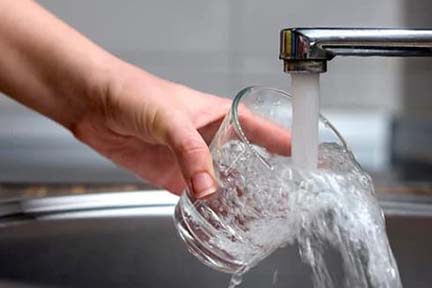
FOR IMMEDIATE RELEASE: November 4, 2021 Contact: [email protected]
Gov. Whitmer Signs Directive to Improve State’s Drinking Water Protections The 6-part executive directive
LANSING, Mich. — Today, Governor Gretchen Whitmer signed an Executive Directive seeking to strengthen the State of Michigan’s water regulations, rules, and policies. The directive, comprised of six parts, focuses on prevention and response to water quality issues. The State of Michigan will continue working to ensure that every community has access to safe drinking water.
“Every parent in Michigan should be able to give their kid a glass of water with confidence, knowing that it is safe,” said Governor Gretchen Whitmer. “Today, I signed an Executive Directive to begin a comprehensive review of the State of Michigan’s role in local water systems. The six-part directive will take several steps to tighten regul
“Every Michigan community deserves access to clean and safe drinking water,” said Lt. Governor Garlin Gilchrist II. “Today’s executive directive will keep Michiganders safe and improve the efficiency with which we prevent and respond to water quality issues. The comprehensive review will give our communities the information we need to improve water infrastructure, reduce inequities affecting low-wealth communities, and protect public health. Governor Whitmer and I will continue to use every resource available in state government to support local water systems to deliver clean and safe water to every Michigander.”
“Michigan is committed to protecting and being proactive when it comes to public health and ensuring Michiganders have safe, clean drinking water,” said Elizabeth Hertel, Director of the Michigan Department of Health and Human Services. “A safe environment is critical to the health of our children, families and communities. This Executive Directive helps us continue to protect Michiganders from exposure to lead, PFAS and any future threats by strengthening the ways in which we share data, engage local families and communities and deliver programs and services.”
“Michigan is blessed with an abundance of fresh water that provides quality source water to every tap in the state, but the aging infrastructure that delivers that water needs aggressive and immediate upgrades,” said Liesl Clark, Director of the Michigan Department of Environment, Great Lakes, and Energy. “This directive combined with Governor Whitmer’s MI Clean Water initiative and support from our legislative partners will help jump start that work in community water systems throughout the Great Lakes State.”
“Every Michigander deserves clean, safe and affordable water from their tap. We applaud the Governor’s action today to further examine and take actionable steps to improve Michigan’s response to drinking water issues,” said Mary Brady-Enerson, Michigan Direct
Executive Directive Details Part One: Laws and Regulations Mandate a line-by-line review of existing laws and regulations governing water. While Michigan already has the toughest lead rules nationwide, there are still areas of improvement. The review will recommend reforms that could include legislation, amendment
Part Two: Resources Identify the state and local resources needed to better assist public water suppliers, collect data, and enforce water laws. The current water funding shortfall disproportionately impacts low-income communities
Part Three: Education & Engagement Analyze efforts around education and engagement to ensure every Michigander who lives in a community experiencing water quality issues get the information they need to protect themselves.
Part Four: Lead Mitigation Direct departments to continue
Part Five: Data Examine existing data collection and sharing practices, with the goal of strengthening the collection and transfer of information and formalizing best practices already in place. While the state does not operate public water supplies, it does regulate the
Part Six: Planning Find opportunities for equitable regional planning in the sourcing, treatment, and delivery of drinking water. Ensure resources are being used effectively to deliver safe drinking water.
To view the full executive directive, click the link below:
Background Information Whitmer-Gilchrist Administration Actions Since the Whitmer-Gilchrist Administration took office in January 2019, the State of Michigan has invested more in its water infrastructure than the previous five years—from 2014 to 2018—combined.
The governor launched the MI Clean Water plan to invest $700 million to build up drinking and wastewater infrastructure while supporting 10,000 good-paying jobs. The plan addresses high water rates, tackles toxic contaminants like PFAS, builds up sewer and septic systems that can’t meet demand, and replaces lead service lines. In addition to MI Clean Water plan, Michigan has invested millions in drinking water, stormwater, and wastewater facilities across the state supporting thousands of local jobs.
The administration established health-based PFAS standards for drinking water, has held polluters accountable, and created statewide positions to pursue environmental justice and advocate for clean water while also continuing to enforce the strongest Lead and Copper Rule in the country. |

